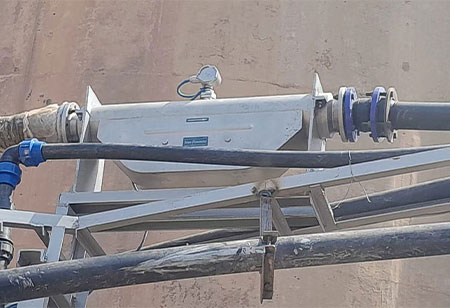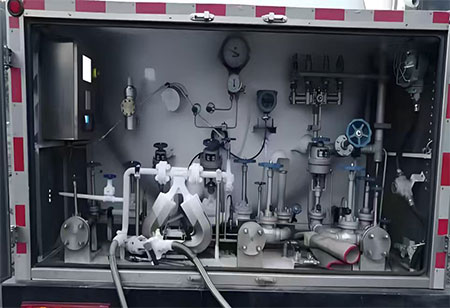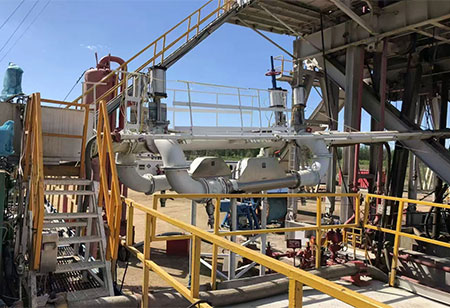
Coriolis flow meters are widely regarded as the most accurate instruments for direct mass flow measurement. Over the last two decades, Coriolis mass flowmeters have evolved from specialized, high-precision laboratory instruments into versatile, robust devices widely adopted across process industries.
Their core advantage—direct measurement of mass flow with simultaneous density and temperature output—remains the foundation of their success. Yet, significant innovations in electronics, materials, and design have expanded their performance envelope, reduced costs, and opened new application fields.
Performance Improvements: 2005 vs. 2025
|
Parameter |
Typical 2005 Values |
Typical 2025 Values |
Reference |
|---|---|---|---|
|
Accuracy (liquids) |
±0.2% of rate |
±0.05–0.1% of rate |
Emerson Micro Motion Elite (2024 datasheet) |
|
Accuracy (gases) |
±0.5% |
±0.25% |
Endress+Hauser Proline (2023 specs) |
|
Turndown ratio |
~20:1 |
Up to 100:1 |
KROHNE OPTIMASS (2023 manual) |
|
Low flow range |
>50 g/h |
As low as 1 g/h |
Bronkhorst Biotech application notes |
|
Pressure rating |
≤150 bar |
>400 bar |
Offshore Oil & Gas reports (2022) |
|
Temperature range |
–100 °C to +200 °C |
–196 °C to +350 °C |
LNG metering studies (Gulf Energy 2023) |
Example: In a pharmaceutical plant, a single high-precision Coriolis meter in 2025 could handle the full production range—from milliliters to hundreds of liters per hour—replacing two different meters previously required in 2005. This reduced equipment investment and calibration efforts significantly.
Electronics and Signal Processing: Higher Accuracy at Lower Flow
In 2005, many Coriolis meters struggled with low flow or noisy process conditions, especially below 1% of nominal flow. Modern digital signal processing (DSP) and advanced filtering now allow meters to reliably measure at very low rates (down to a few grams/hour).
2005 models: usable turndown ~20:1, accuracy ±0.2% of rate.
2025 models: turndown ~100:1, accuracy ±0.05% of rate.
This leap means a single Coriolis meter can replace multiple traditional flow devices in wide-range applications.
Example: In biotechnology, Bronkhorst mini-Coriolis meters now measure <5 g/h of glucose solution in continuous perfusion processes (Bronkhorst Biotech notes, 2023).

In the last 20 years, energy and cryogenic industries have pushed Coriolis technology into demanding environments:
Liquefied Natural Gas (LNG): reliable operation at –160 °C.
Liquid Nitrogen / Liquid Oxygen: stable density and flow measurement down to –196 °C.
Liquid Hydrogen: specialized alloys and thermal stress management for safe hydrogen fueling stations.
Compared with ultrasonic cryogenic meters (accuracy typically ±0.5% to ±1.0%), Coriolis type cryogenic flow meter offers higher precision (±0.1% typical) and density measurement, making it attractive for custody transfer in LNG and emerging hydrogen markets.
Example: At Qatar LNG export terminals, Emerson Micro Motion Coriolis meters are used for ship loading, offering ±0.1% accuracy and real-time density measurement—superior to ultrasonic meters with ±0.5–1% accuracy (Qatar Petroleum LNG Report, 2022).
Handling Multiphase Flows: Progress and Challenges
Coriolis flow meters excel in single-phase liquids, but performance declines with entrained gas or solid particles. Over the past 20 years:
Algorithm improvements have reduced measurement instability in aerated flows up to 10–15% gas volume.
Dual-sensor and multi-frequency tube designs provide better stability in slurry or multiphase conditions.

Still, in high-gas (>20%) or abrasive slurries, magnetic or ultrasonic flow meters may be preferred due to robustness, albeit with lower accuracy.
Example: In a Chinese petrochemical plant, KROHNE OPTIMASS meters with multi-frequency tube design improved stability of 8–12% gas content polypropylene slurry flows by ~30% (China Petrochemical Flow Measurement Journal, 2021).
Market and Digital Integration
Costs have decreased by 20–30% compared to early 2000s, making Coriolis flow meters more accessible. Digital integration now includes:
IIoT connectivity (Ethernet/IP, PROFINET, Modbus TCP).
Predictive diagnostics for tube coating, gas entrainment, or sensor drift.
Self-verification tools to validate calibration without removing the meter.
By comparison, traditional flow meters often require external verification rigs, increasing downtime and maintenance costs.
Example: A European refinery implemented Endress+Hauser Proline meters with Heartbeat Technology, performing monthly online self-verification, saving ~15% of maintenance labor (E+H Case Study, 2023).
Future Outlook
Looking ahead, the next decade for Coriolis flow meters will likely focus on several exciting trends:
Sub-micro flow measurement for biotechnology and microfluidics.
AI-driven multiphase correction for oil & gas and chemical processes.
Hydrogen economy readiness, ensuring accurate fueling and custody transfer at –253 °C.
With proven adaptability, Coriolis meters are expected to remain the benchmark for high-accuracy flow measurement well beyond 2025.
The past two decades have shown that precision alone is not enough—adaptability, intelligence, and integration define the true value of modern Coriolis meters. As industries push into extreme conditions and micro-scale processes, these instruments challenge us to rethink how we measure, control, and optimize flow. The story of Coriolis technology is still unfolding, and its next chapter will be written by those willing to explore its limits and reimagine what’s possible in process measurement.
We use cookies to ensure you get the best experience on our website. Read more...